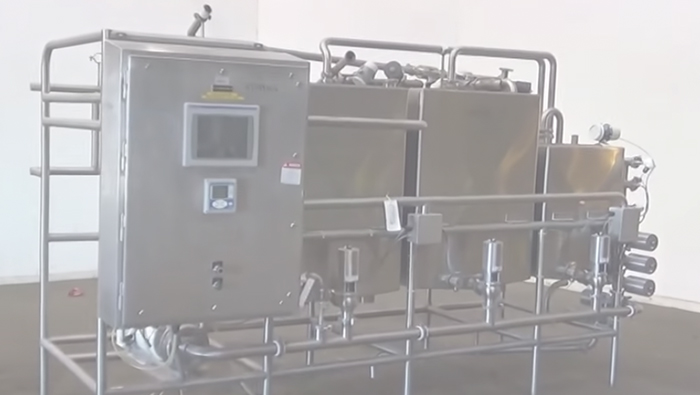By Bernardo Clavijo
“Validation” is a term and concept that is widely used but is also widely misused and misunderstood. Validation of food safety control measures is currently a mandatory requirement in US, other countries and in internationally accepted regulations, but also in GFSI certification schemes, i.e. SQF, BRC, FSSC22000 and IFS. Several FDA and USDA regulations including FSMA Preventive Controls, LACF/AF, Juice HACCP, HACCP for meat and poultry products, require performing validations based on technical/scientific evidence and criteria (FDA, 2019a; FDA, 2019b; FDA, 2019c; USDA, 2016). Some of the foreign and international regulations have also incorporated validation provisions, e.g. SFCR and Codex Alimentarius (Canadian Minister of Justice, 2020); Codex Alimentarius, 2011; Codex Alimentarius, 2013). GFSI is based on HACCP principles, but some of those standards explicitly require validation of food safety control measures (e.g. FSSC 22000, SQF and BRC).
Sanitation activities are considered one of the major hygiene control measures, and they are classified as Preventive Control or Operational Prerequisite Program (oPRP) under FSMA and FSSC 22000, respectively, so it is not required but highly recommended that they be validated. In the dairy and beverage industry, sanitation is performed mainly by Cleaning-In-Place (CIP) procedures, which consists of recirculation of detergent and disinfectant solutions to remove residues and inactivate microorganisms. Like other sanitation procedures, in CIP it is important to standardize some critical factors such as temperature and concentrations of chemical solutions, but also those related to mechanical aspects of CIP, e.g. recirculating time, flow rate, pressure and turbulence.
Taking into account available standards, guidelines and recommendations about cleaning validation (e.g. Codex Alimentarius, A-3 Sanitary Standards, EHEDG), but especially professional experience, here are some consideration for developing a practical approach to CIP validation:
- Preliminary Activities
- Hygienic design of equipment: It is important to determine equipment compliance, legal requirements and technical specifications for hygiene design, e.g. cleanability, inspectability, prevention of contamination, contact and no-contact surface materials. A piece of processing equipment that is engineered to accomplished its intended purpose but with crevices, pressed fits with open seams, threads in product contact zones, roughly finished product contact surfaces will create an opportunity for serious product safety and quality problems of the food manufacturer.
- Hazard identification: Includes pathogenic and spoilage microorganisms, allergens and chemical residues, and their characteristics and impact in food safety and quality.
- Decision/acceptance criteria: Related to contaminant/hazard level in samples obtained for verification, this can also be the maximum level on the equipment’s product contact surfaces after cleaning.
- Laboratory procedures: Identification of sampling techniques (visual, swabbing, rinsing), sampling frequency and analytical methods (chemical and microbiological) appropriate for monitoring and verifying cleaning and sanitizing programs.
- Experimental conditions: Based on the standard operating procedures (SOP) for CIP, it is essential to determine so called “worse-case scenarios” in terms of: cleaning frequencies, concentration and temperature of cleaning and sanitation agents, turbulence condition; when appropriate, it will be useful to perform microbial/chemical challenge studies.
- Validation Protocol
- Technical documentation review: Both detergents and disinfectants specifications have to include active compounds, concentrations, temperatures and other relevant directions of use, safety instructions (SDS), environmental impact.
- Detergents and disinfectants efficacy: For alkaline and acid solutions it is important to determine efficacy of chemical residues removal (e.g. gravimetric technics with coupons); for commercial solutions with chemical additives it could be useful to determine rinsing properties. In the case of disinfectants, there are many lab methods, but it is recommended to use EN 1276 and EN 1275 standards using as possible, indigenous or surrogate microorganisms.
- Hydraulic factors review: Proper design of CIP systems includes a suitable balance of hydraulic conditions to achieve needed turbulence, by means of factoring in among other things: pipes diameters, circuits lengths, CIP pumps speeds, type and size of equipment to be cleaned (e.g. volume of tanks), location of valves, product pumps and measure instruments.
- Flow rate measurements: As part of turbulence evaluation, it is necessary to measure flow rates at key locations within each CIP circuit where there are pipe diameter changes, valving, pumps and flow-restricting devices.
- Monitoring and Verification: Use of ATP swabbing systems as well as periodic c sampling and lab analysis for microbiological and chemical residues including allergens.
- Adjustment: If monitoring and verification results show non-conformances, there is a need to implement corrective actions and to make adjustments in CIP procedures.
- Validation Report – Validation results have to be documented through a technical report that may include: validation objectives, methodology and protocol applied, results, discussion, and conclusions.
- Re-Validations – CIP procedures that were validated must be implemented and maintained. If any critical factor or condition is changed, the CIP procedure involved has to be re-validated. Even when changes do not occur, regulations and food safety standards usually recommend re-validations on a periodic basis, sometimes annually.
- FDA, 2019a. HARPC for Human Food. 21 CFR 117. Last updated: 09/19/2019.
- FDA, 2019b. Thermally Processed Low-Acid Foods Packaged in Hermetically Sealed Containers. 21 CFR 113. Revised as of April 1, 2019.
- FDA, 2019c. HACCP Systems. 21 CFR 120. Last Updated: 09/19/2019. US Food and Drug Administration.
- USDA, 2016. HACCP Systems. 9 CFR 417. Revision date January 1, 2016. FSIS.
- Canadian Minister of Justice, 2020. Safe Food for Canadians Regulations. Last amended on June 17, 2019. Government of Canada.
- Codex Alimentarius, 2011. General Principles of Food Hygiene. CAC/RCP 1-1969. Adopted 1969, editorial corrections 2011.
- Codex Alimentarius, 2013. Guidelines for the Validation of Food Safety Controls Measures. CAC/GL 69- 2008. Adopted 2008, editorial amendments 2013.
Posted in Foods, Issue of the Month and tagged Bernardo Clavijo.

